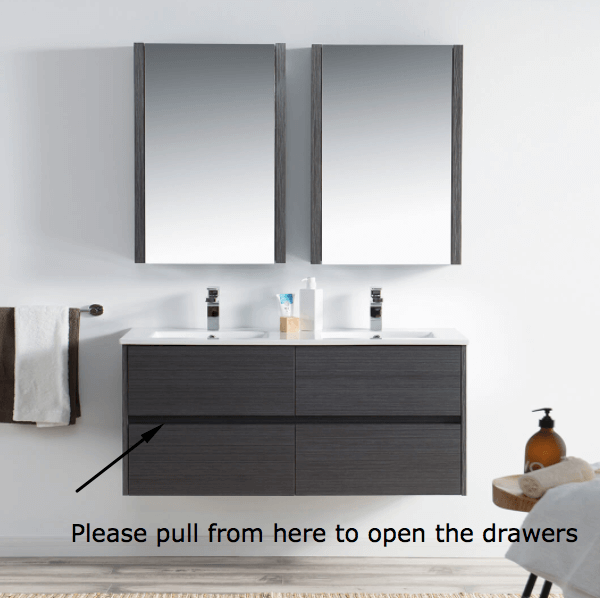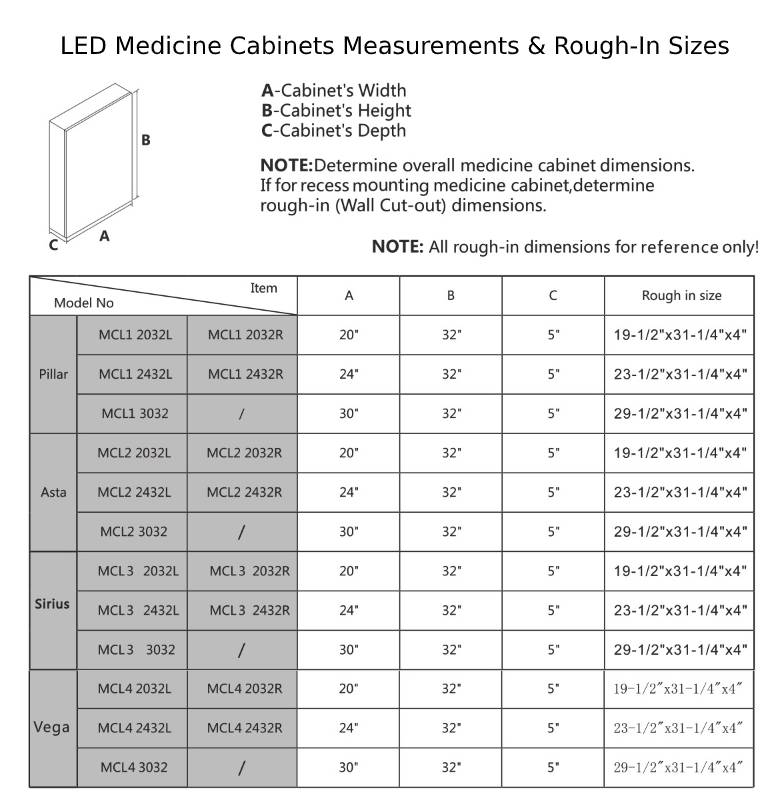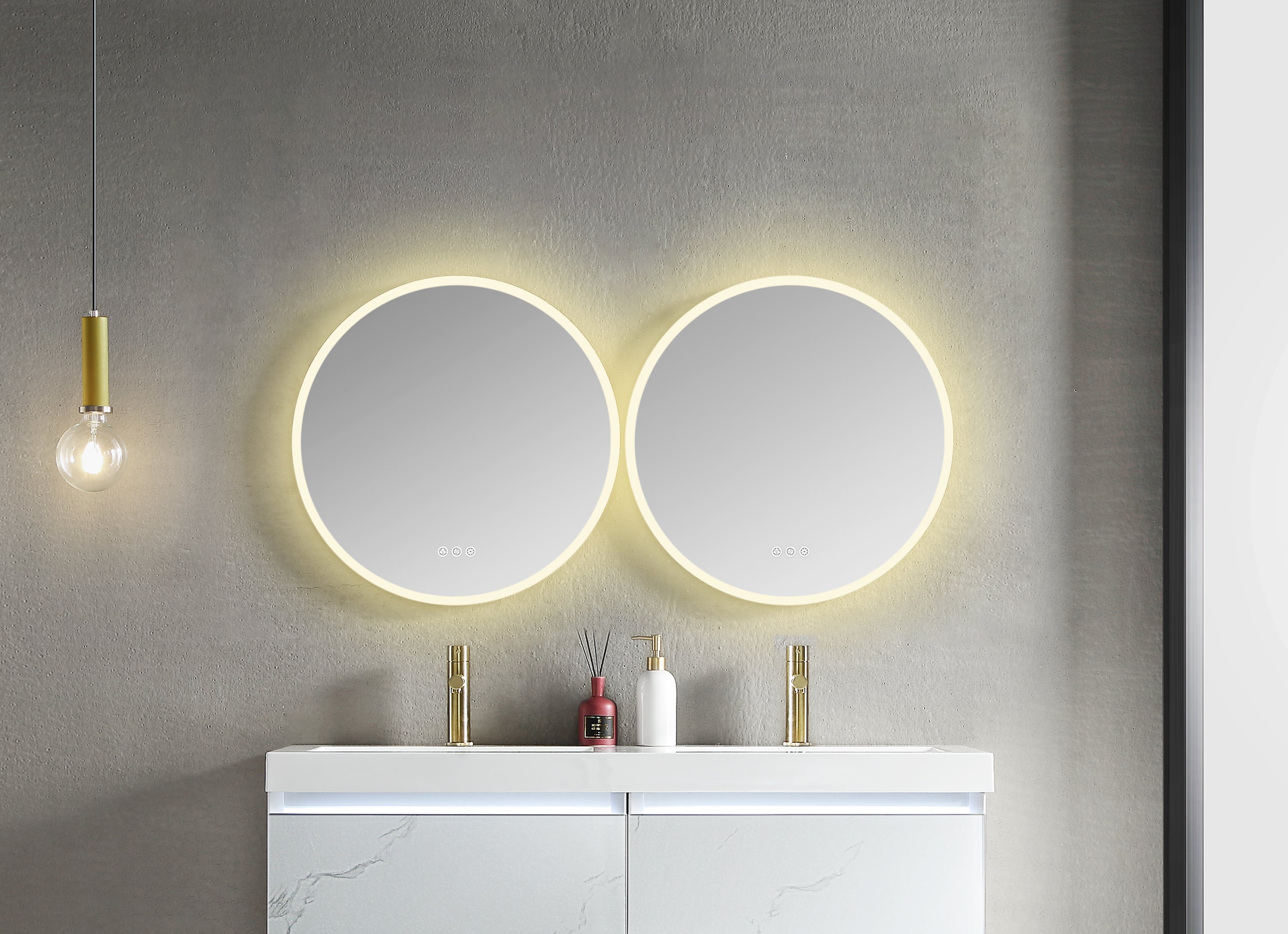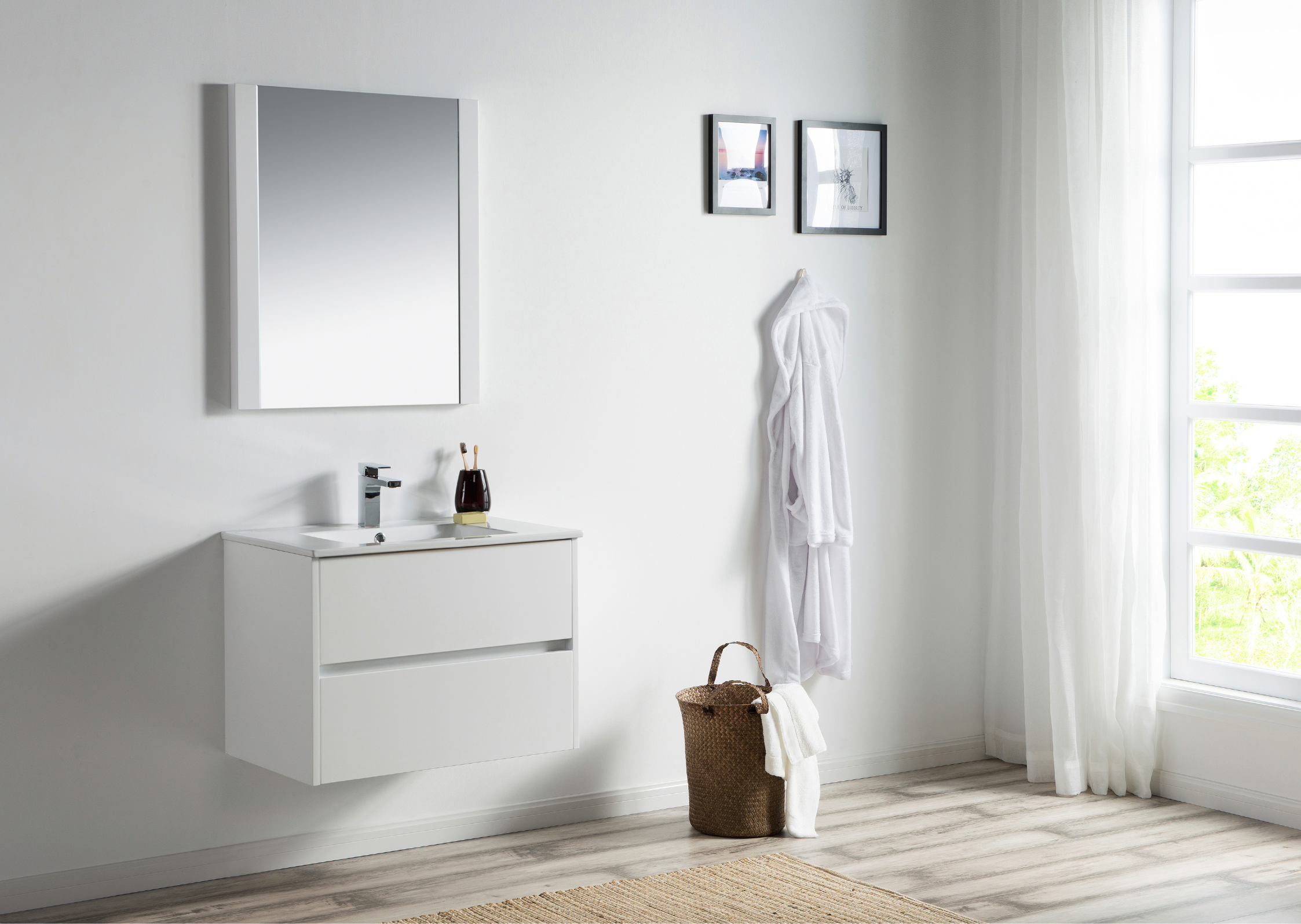SKU:V8036 36 01
Blossom Assisi 36" Glossy White Single Sink Vanity Base
Blossom Assisi 36" Glossy White Single Sink Vanity Base
Couldn't load pickup availability
- Free Shipping on Orders Over $400
- Same-Day Order Processing
- Easy Monthly Installments Starting at 0% APR*
• Text or call 800-614-7411
• Email support@usbathstore.com
• Start a live chat
Our team is available to serve you 8:00 AM - 11:59 PM ET, 7 days a week.
Blossom’s Vanities are made to suit your needs with a whole variety of different innovative and inspiring designs that can appeal to palates. Our skillfully crafted designs range from contemporary, modern, elegant, stylish, simple, versatile, functional, free standing, wall-mounted, corner-mounted and more.
What's Included
- Vanity Base
- Hardware
Not Included
- Sink
- Faucet
- Drain
Features
- Plywood construction for durability.
- Elegantly uninterrupted look with mitered joints.
- U-shaped cut-out on both drawers for easy plumbing.
- Handle-free design with miter-cut edges and soft-closing drawers.
- Eco-friendly European-style minimalist design.
- Classic wall-hung design with ample storage.
- Compatibility with mirrors, medicine cabinets, and side cabinets.
- Five-layer painting ensures twice the longevity against moisture and humidity.
- Matching side cabinet provides additional storage.
- Enjoy a ONE YEAR WARRANTY with top-level customer service.
Specifications
| Item Number | V8036 36 01 |
| Brand | Blossom |
| Collection | Assisi |
| Finish | Glossy White |
| Number of Sinks | Single Sink |
| Number of Drawers | 2 |
| Installation | Wall Mounted |
| Material | Plywood |
| Gross Weight | 61 lbs |
| Vanity Dimensions | 35-1/4″ W x 17-7/8″ D x 20-7/8″ H |
Dimensions

Warranty
 |
One-Year warranty
|
Documents & Files
Frequently Asked Questions
⮞ What height should the wall hang vanity be installed at?Normally, the bottom of the vanity to the floor should be 12″ to 15″. |
⮞ For Colmar vanity, can the handle be changed? What's the center-to-center measurements for the handle?The handle can be changed, and the center to center is 12-5/8″. |
⮞ How to remove Blossom vanity’s drawers?Please follow our drawer removal instructions. Click here |
⮞ How to pull out Valencia vanity drawer? |
⮞ Can sink’s overflow cover be replaced with other finishes instead of Chrome?Unfortunately no, right now they only carry Chrome finish. |
⮞ What’s the measurements & rough-in size for Blossom LED Medicine Cabinets?For detailed LED Medicine Cabinet measurements and rough-in size, please refer to our detailed diagrams. |
⮞ What does L or R mean in the LED Medicine Cabinet SKU?L means hinge on the left side of the LED Medicine Cabinet. R means hinge on the right side of the LED Medicine Cabinet. |
Buying Tips and Guides
⮞ Tips: 10 Things Nobody Tells You About Renovating Your Bathroom
Renovations of any kind are a daunting process. But when it comes to the bath—a space that needs to be both hyper-functional and serene, practical and, ideally, a little bit luxe—the stakes somehow seem higher. There are a million decisions to be made along the way, from mirror to grout—and the price tag can be surprising. What to know before you begin? Take our advice:
1. Don’t assume your contractor is on the same page.
“When you’re functioning as the general contractor—or even working with a general contractor—you have to spell out every part of the plan, and never assume everyone is up to speed,” say the mother-daughter team behind Matriarchy Build “Someone we know had a contractor demo the wrong bath,” they add.
2. How much does a bathroom remodel cost? More than you think.

Think you can remodel your bathroom head to toe for a couple thousand dollars? We hate to tell you: the average cost of a bathroom remodel was $11,364 in 2016, according to the National Kitchen and Bath Association (NKBA). A basic, low-grade renovation with less expensive materials or smaller swaps could run from $1,500 to $5,000, while a top-of-the-line, tip-to-toe renovation could run up to $23,000.
NKBA estimates that, broken down, most of this cost comes from fixtures and plumbing (about 29 percent), followed by counters and surfaces (21 percent), labor (20 percent), and cabinetry and hardware (16 percent). Keep in mind: they advise that, all told, your bathroom project should cost no more than 5 to 10 percent of your home’s value.
3. You may want to rethink that statement-making bathtub.
You may be tempted to upgrade your bathroom with a dramatic freestanding bath. But it might not be the most practical choice going forward, particularly if you’re petite, hate cleaning, have an old rickety house, like to take long baths, or take more showers than baths.4. Flattering lighting requires planning.
 Don’t think you can install a few lights and call it a day: because bathrooms are sometimes small and/or dark and filled with mirrors (which complicates how light bounces around), lighting requires careful thought and placement. The simplest way to light a bath is a single diffuse light in the center of the ceiling.
Don’t think you can install a few lights and call it a day: because bathrooms are sometimes small and/or dark and filled with mirrors (which complicates how light bounces around), lighting requires careful thought and placement. The simplest way to light a bath is a single diffuse light in the center of the ceiling.
Have a bathroom that’s already pretty bright? A pair of wall sconces should be sufficient. Thinking about ceiling-inset downlights? Place with care: avoid installing directly over light-colored countertops (since those will reflect the lights), and place close to the wall over a vanity to maximize light when looking in the mirror. And if you spend a lot of time applying makeup, consider vertical fluorescent light fixtures on either side of the mirror.
5. Don’t forget to install accessible outlets.

You don’t want to get to the end of a renovation and realize you’ve forgotten to consider the outlets. Think of these outlet errors: you have to plug your hairdryer in across the room, and can’t see yourself in the mirror from there. Or, you’d like to keep your electric toothbrush charging at all times, but neglected to install an outlet in the medicine cabinet. Or, you share your bathroom with your spouse, but only installed an outlet on one side of the vanity.
6. When it comes to tile, you only need to remember a few types.

Forget the endless stacks of tile samples your contractor will show you: you need only remember a few key varieties. The types of tile that are particularly hardy, long-wearing, and timeless in the bath—in shower stalls, on floors, and on walls—are porcelain, glass, natural stone, cement, and, of course, subway tile (a type of ceramic tile so popular we’re counting it in its own category). The options become a lot simpler once you whittle down to these time-tested options; then choose a color and a shape and go from there.
7. Your grout could make or break your bathroom.
Grout may be an afterthought in the scheme of your whole remodel: it’s a small and unsexy element of the bath. But, it’s hugely important: It seals out dirt and water, compensates for small size differences between individual tiles, and firms up the structural integrity of an installation.
How to choose the right grout for your bath? Answer this series of questions: Do you want the grout to stand out, or blend into the tile? Is the grout in a high splash zone, or a fairly dry place? (If it’ll be getting wet a lot, as in a shower stall, opt for synthetic grout; go for cementitious grout everywhere else). Will dirty grout drive you crazy? (If so, avoid white.)
8. Small space? There’s a compact toilet for that.

Toilets are not one size fits all: if you have a small space, consider a petite toilet (see 10 Easy Pieces: Compact Toilets). Or, opt for a traditional or modern floor-standing toilet, water-conserving toilet, or wall-mounted toilet.
9. Don’t make storage an afterthought.

So much of creating a bathroom that feels both serene and well-functioning comes down to good storage. Be sure to look for storage opportunities—even small, simple ones—when drawing up your plans, to make them feel integrated and not added-on. For example, architect Malcolm Davis says: “I like to place a couple of tall shallow cabinets hidden in a stud bay. You don’t need deep shelf storage; a shallow shelf can store a lot. I like to put a recess in the shower and I try and integrate towel bars to feel built in.”
10. And, you might not have to remodel.
Maybe you’ve moved into a new house and can’t stand the tile in the bathroom, but don’t have the budget to replace it completely. Or maybe you’re renting and can’t remodel (if you want your security deposit back, that is). The good news is you might not have to demo everything and start fresh. If it’s the tile you want to upgrade, consider tile refinishing, or swap out a few basic fixtures (lights, faucets) for a big impact.
⮞ Buying Guide: Bathroom Vanity Types for Modern Bathrooms

Single or Double sink? Pedestal or vessel?
Whether you go with a simple traditional style or custom-designed vanity, before you start, be sure you have enough space for the look you want.
Your bathroom vanity usually includes a sink, a countertop, a place to store toiletries and linens, and a mirror.
Vanities come in six basic types: pedestal, free-standing, floating, vessel, under-mounted sink and cabinet.
PEDESTAL
Requiring very little space, a pedestal sink is the simplest type with no countertop or space for storage. It’s just a sink and basin. But it can fit into any style of home and is easy to install.
FREE-STANDING
Much like pedestal style, a free-standing vanity also has a minimal profile but is available in a square or rectangular shape that can support two sinks. Great for a master bath.
FLOATING
A wall-mounted vanity, also called floating, is directly mounted (securely) on your bathroom wall. Gives your bathroom an open, contemporary look with floor space underneath. If you don’t need much storage space, you can simply add a countertop.
VESSEL
This style sits above your counter with a bowl that arises from the sink area and has its own separate tap. A vessel sink can be quite elaborate with intricate patterns and designs and made of metal or porcelain.
UNDER-MOUNTED SINK
An under-mounted sink has a built-in basin mounted below the countertop of your vanity. This style has a sleek, smooth appearance but has limited space underneath the sink and is a bit more difficult to install.
CABINET
A vanity cabinet is designed much like your kitchen cabinets with pull-out drawers that can be custom outfitted for your storage needs. Available in many door and hardware styles.
Not a distinct type but if you have a tiny bathroom, you may opt for a corner vanity to take advantage of the limited space.
Once you choose the type and size of your vanity, you’ll want to select its material and shape, style of doors (unless it’s a pedestal) and the right countertop.
⮞ Buying Guide: 10 Types of Bathroom Faucets
As you get a great bathroom sink or vanity set up for your bathroom renovation or new home, you’ll need a quality bathroom sink faucet to go along with everything you are trying to achieve.
With that in mind, you have to look carefully at how you’re going to install such a faucet.
You need a quality bathroom sink faucet that adds a good look to bathroom design. A well-made faucet should be something that is properly designed and is also ready to stand out.
A faucet set should be made with not only a good tap but also proper controls for hot and cold water. This is a look at some of the different kinds of bathroom faucets you can use today. These include many great options such as single-hole faucets, single handle faucets, faucets with spray heads, centerset faucets, and wall-mounted faucets, as well as the faucet finish such as a chrome finish, stainless steel, or satin nickel. They are sensible for a variety of bathrooms including your primary bathroom. Some have a few more unique and noteworthy designs.
Types of Bathroom Faucets
|
1. Center Set 
A center set faucet is one of the more common types of bathroom faucets you can order. This features a small body that offers a series of hot and cold water controls. The great design features a comfortable look. It is typically made with just one single body piece in mind. |
|
2. Single Handle 
A single handle faucet is exactly what its name suggests. It is a faucet that uses just one handle. This can be positioned to the left or right to adjust the temperature of the water. The handle is typically found right behind the spout. This can come with a much smaller mounting space as it doesn’t require too much drilling to secure. It can fit in a spot that is about two or three inches wide. |
|
3. Spread Fit 
A spread fit faucet uses three separate pieces that stick out from the surface of your sink. These are the main spout and the hot and cold water controls. The design of such a faucet establishes a comfortable look that adds a bit of class that is refined and allows for a bit of a refined look. |
|
4. Bridge 
A bridge faucet is made with a tap that is situated up over the surface of your sink. It works with two separate water controls for hot and cold water. Those two controls are mounted to the surface while the spout is right in the middle. This is named for how it establishes a beautiful bridge-like design. It is a classic type of faucet. . |
|
5. Wall-Mounted 
Depending on how our bathroom is organized, you might be able to get a wall-mounted faucet ready. This works when your plumbing fixtures are secured to the walls of your property. It is designed with floating sinks in mind although it could fit anywhere you wanted it to as well. This kind of fixture can be attached right above your sink basin. It has to protrude by a few inches so the water can actually get into the basin. You should use this if your plumbing fixtures are organized around the walls although you could have such fixtures reorganized depending on your needs. |
|
6. Sprinkle 
A sprinkle sink faucet uses a unique type of spout. Instead of the traditional cylindrical spout, it uses a setup where the water comes out in a rectangular pattern. A small series of borders will go to the sides of the spout where the flat body in the middle allows the water to flow out gently into the sink basin although a cover may go around the entire surface of the spout. This establishes a unique appearance. |
Materials
|
1. Brass 
Brass is a very popular material for how it combines copper and zinc into an alloy. It offers a shiny yellow tone. Copper is a popular antimicrobial agent although it is not fully clear as to how it works with that in mind. Aluminum may be added into the brass to make it stronger and capable of resisting corrosion. Tin materials can also be added to prevent dezincification, a process where brass loses its zinc properties as it is exposed to water. |
|
2. Stainless Steel 
Stainless steel materials can add a classy look to your faucet when used right. It is harder than brass and features nickel and chromium to create a shiny silver-like tone. This can be rather hard in texture and will not dent or wear out easily. It can display stains quickly so make sure you wash it regularly if you plan on going with this option. |
|
3. Zinc 
Zinc is another good choice to have for your needs. Zinc has long been used as a replacement to brass because it is not as expensive. It typically has a dull gray color but it can be plated over with a chrome design to make it attractive. Zinc is light in weight and can resist corrosion quite well. You’d have to check carefully on how well the zinc in your faucet works so you’ll have an easier time with getting it organized well enough. |
|
4. Plastic 
Plastic is often used in many faucets for how it is cheap and easy to install. Some forms of plastic do better than others though. Polyethylene is a better option for how it uses cross-linked fibers to create a sturdy body that does not wear out. It is not as likely to chip away and get into your water supply either. You can even order a faucet that features a fancy design that includes a series of fake crystal accents on the control knobs among other prominent features. Still, plastic is typically the last option that you would normally want to consider for a bathroom faucet. It is easy to break and might be too unappealing and casual in its appearance when compared with everything else you’ve got in your bathroom faucet arrangement. |
Size
The size of your faucet should be checked carefully based on how you are getting it installed and what it will feature. Expect to take about 6 to 8 inches for the entire design of your faucet.
When using a faucet with a singular plate, you will need about 6 inches of room for it. This is to keep the entire plate intact.
For anything that uses separate parts, expect to take about 3 to 4 inches in between each item. This includes 3 to 4 inches in between the cold water control and the main spout, for instance. This measurement is relative to how far apart cold and hot water lines are typically located from each other.
In terms of the length of your faucet, it should be about 12 to 16 inches long. It needs to come out far enough over the main body of the sink basin so it can actually stay functional.
You should not assume that the size of your bathroom or its organization will make an impact on your faucet. The faucet should be chosen independently of the size of your space.
Cost
The cost of your faucet set will be based on three factors:
Where you are installing itIts general size and arrangementThe materials used to make itIn most cases, you can spend around $100 to $200 for a more traditional type of faucet. But that total is the minimum when you consider the other features that can be added to your faucet.
A bridge faucet will cost more than most others. It can go for about $200 to $300 due to the elaborate design that comes with such an attractive faucet. It may also cost the same for a spread fit faucet due to the added cutting needed to get such a faucet established as well as the added effort needed to get the system wired properly and quickly.
The cost of a wall-mounted option might be even higher. In addition to paying about $200 or more for a wall-mounted faucet, you would also have to spend extra on wiring the plumbing features around your bathroom so the new faucet can actually be supported. Depending on the effort, you might have to spend a few hundred extra dollars to make this part of the faucet work right.
The materials used in the construction of your faucet can also add to its value. Brass faucets often cost $300 or more dollars.
Don’t forget about the labor costs involved. It can cost about $200 to hire someone to spend about two hours to get it installed. Added costs may also be incurred if you have a faucet that requires you to either cut around your bathroom counter or vanity or if you need to wire some of your plumbing features just to make it all work.
Added Features to Consider
Your bathroom faucet can include the following features to make it useful:
- A stopper should be used with a lever or a pull that can be triggered to close up the sink. This is to keep water from draining as needed.
- You can always add a soap dispenser to go next to your sink. Try and find something that uses a similar finish and physical design. Make sure it is placed far apart from the other features in your setup too.
- You can also order a bathroom faucet that features a flexible head. This means that it could be pulled out from the base like what you get out of a kitchen sink faucet. This is made particularly for cases where you need to wash off a shaving razor or toothbrush among other items.
Share















What our customers are saying...
-

What an excellent company and excellent products. Just like the old days when companies really cared about their customers, these guys are awesome!!!
Betty C.
Warminster, Pennsylvania
-

I was greeting in chat soon after logging into their web. She was genuine and very helpful in getting me the correct items I needed. The communication about shipping and tracking was great as well. My mind was at ease concerning my investment purchase! Thank you!
Jolene
San Jose, California
-

I've been extremely imporessed with the service--from the actual humans answeing phone calls to the accurate and prompt follow up, including and unrequested phone call to follow up on my order delivery requests.
Monica
Fairfax County, Virginia
































